
Most of the routine challenges of adult life I have managed to learn to cope with. Not so the problem of tying shoelaces. Part of this is my own ineptness, though I am usually very good at doing things with my hands. Another part, I must feel, is that laces are cheaply made and thoughtlessly designed. They may be of waxed, smooth cord that quickly slips loose, or of cloth with fragile plastic tips. Often they are over-long, which could in theory be addressed by a second knot, but the first is usually trouble enough – so they end up dangling onto the ground. My laces for my snow running shoes are made of Kevlar, which is nowadays inexpensive and virtually unbreakable, with sturdy plastic clamp fasteners for closure in lieu of knots. These work very well.
So, when my shoelaces broke a couple days ago, I bought a prepackaged set of no-tie laces to try. It will take me a bit of time to figure out how well they work. The idea does seem a sound and overdue one!

I painted my house about twelve years ago, after stripping off the aluminum siding and considerable rework of the underlying wood clapboard. The cladding materials were in dubious condition, at the best. I scraped and brushed, primed and painted.
Well, things don't last forever, and age shortens the span of use and good appearance. How often should a house be painted? Well, maybe every five to ten years, depending on all kinds of factors. It was clearly time for mine to be repainted.
I decided to do the work myself for various reasons, some of them probably good ones, others dubious. One was that this is the way I've always approached the task. Another is that I felt I would probably do a better job than a hireling. Besides removing loose paint with a scraper and wire brush, I washed the whole exterior with hot water and trisodium phosphate and a scrubbrush. After a number of years, the exterior of a house really does get very dirty, and painting over dirt seems nothing but an invitation to early failure. How often do you see exterior painters washing a house with soap and hot water? Other reasons, probably in the dubious category, were that it was cheaper and that I wanted to show myself that my body was still capable of doing such things.
The process wasn't bad, other than that it doesn't get any easier to move the thirty-foot aluminum ladder around. It's rather a mindless activity (something like driving a car), which is fine on a clement late summer day.
Paint commonly fails in a couple of ways, neither of which can necessarily be addressed by ordinary painter's preparation. One is alligatoring, which happens when the paint is more brittle than its substrate. It can't stretch and shrink enough, so it cracks. Covering up older, lower quality paint with a new layer is very unlikely to solve the underlying problem. The older paint would need to be removed completely, which may not be practical. The second failure mode is peeling, most commonly when water is getting underneath and onto the surface of the wood. The best way to prevent that, obviously, is to make sure that things are sealed at the top, since water generally runs downhill. (Backpriming also helps.) Water sometimes may run horizontally or even uphill, however, due to surface tension or capillary action. In preparation, I found the the most pervasive failure in my own home had been at the joints of the clapboards. The siding of a hundred years ago was not pre-primed. It is inevitable that, over a long period of time, the paint will crack at the joint between the bottom of one clapboard and the underlying piece beneath it. This creates a systematic tendency to fail as rain creeps behind the paint of the lower clapboard. So, in preparation and painting, I made a special point of scraping the bottom of the clapboards and of making sure that the new paint was sealing that joint. I selected a very elastic primer, which was quite pricey. How long that seal will last, remains to be seen.
It is a fresh prime coat that I put on. I'll look at things again in the spring. It's possible that I'll hire someone to put a finish coat over that. We'll see.

My Droll Yankee bird feeder is a transparent tube (here rather dirty inside, since disassembly and cleaning is a nuisance) that makes it visible how much seed there is. I should say, perhaps, visible to me. As far as I can tell, the birds derive no information from the sight of the top of the feed. They land on seemingly random perches. If the feeder as empty at that level, here at the top, they seem to feel confused and perhaps a little betrayed, as I was as a baby when my mother painted that awful-tasting stuff on my thumb and it wasn't good to suck any more. After a while, the disappointed bird will hop to another perch. It doesn't seem to involve much more calculation than the thought, well, that place didn't work, I guess I'll try somewhere else. It's far from an apparently immediate reaction, Aha, I can see there's food lower down, I'll shift down there.
In fact, birds' presence at the feeder seems to have much of the aleatory about it. One day, there will be a bunch of them, the next day few at all. Memory and habit don't seem to be big factors. They watch each other very closely, especially the species that run in flocks, but even the more solitary ones seem to feel reassured if a squirrel is present, and even curious if the squirrel has found a bit of food.
Well, I guess that birds, like humans, learn a lot more from each other than any one of them figures out for himself.
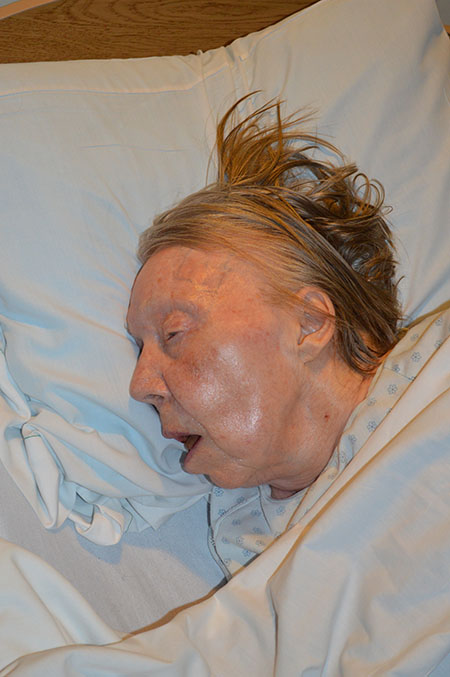
Today is the fifth anniversary of the death of my mother. (The picture here is the last one of her on this side of the divide.) A book isn't the same as its last chapter, and I would wish people to think of the eighty-some years of her whole life, not just its ending. Still, she did die, and she died inch by inch over a period of five years. At this point, enough time has passed that I clearly feel the events as being in the past, rather than recent. The era of helping take care of her has left some profound effects on me, I hope for the better.
The end of life usually isn't very pretty. In one of my mother's lucid moments shortly after her stroke in 2009, she commented that if she had it to do over again, she wouldn't have gone to the hospital following the event. But she had gone. Things went rapidly downhill from that point on, though times were certainly mixed. Most often she was happy, blissfully unware that things weren't the way they used to be, that she was no longer in her beloved home, that her son Peter had died prematurely and unexpectedly. She certainly wouldn't have chosen to spend five years of her life as she did, with that dread disease paralyzing her body and her mind slowly, slowly, slowly but inexorably. The end of my father's life was different. He wanted to live as long as possible. He was so terrified of the idea of death that he never heard that word from any of the people around him, because they knew that the thought, for him, would be even more dreadful than the event. He spend ten years in a slow spiral down, body and and mind, poor man, with few moments of joy. For both my parents, I was glad for them when the end came, that they had finally found rest. May God grant that my last days, whatever they are, are not such a protracted spell of torture and of misery. I have clear instructions in various logical places that I don't want my life prolonged in that fashion, and more latterly have taken to wearing a DNR bracelet.
The years of caregiving certain took down my belief in our health care system several notches. For the duration, I was working in a citadel of the system, which I felt and still feel was a wonderful opportunity for me. Health care has many incredibly talented and deeply caring individuals working in it. As a massive system and technocracy, it might reasonably to be expected to suffer from the limitations that any large organization built of human building blocks is likely to suffer. Because the issues it deals with are vital, by definition, and because the human body and soul (for lack of more neutal word) are such tremendously complex things, the challenges are especially steep and the failures little short of spectacular. Subspecialties are very necessary facets of integrated care, and it wouldn't be realistic to expect the cameo appearance of the subspecialist to be well integrated with everything outside of that speciality. Individual patients can't be segregated into pieces as separate as neat as the professional societies of the care providers, however. My father had cardiac surgery for very real heart problems in the last years of his life. When my parents questioned if surgery would be safe, the surgeon replied that he frequently operated on much older patients. What the surgeon couldn't quite see, however, was the totality of the physical and mental health problems my father faced (including atypical Parkinson's disease, strongly affecting his moods), and that even with an A-1 heart his quality of life would be rocky. My mother remarked that if they'd understood what the recovery period would be like, they never would have opted for the surgery. Health care is full of people walking along their narrow paths.
I spent much time with my mother during these years, when her intellectual capacities didn't reach to much more than holding hands. This gave me a lot of time to think about what I wanted to do with my life, once the caregiving period had been completed. This period of reflection was invaluable for the era of my life I am going through now. There were many things I had wanted to do but couldn't or hadn't, for one reason or another. I am doing many of them now and finding deep satisfaction in the process.

It has been a banner year for rabbits, for whatever reason. (I'll go ahead and call it a banner year for the abundance, though others, including my grandfather, would see them simply as vermin.) There have been very frequent and continuous rains, which is the other thing that stands out about this spring, but I can't figure out why that should have anything to do with the number of rabbits. Indeed, I remember Robert J. Lertsema, in a news broadcase in the early 1970s, talking about how very heavy rains had filled their burrows, decimating the population.
(I have also seen as many foxes this year as I usually see for several years together, but that isn't a really big number of foxes.)
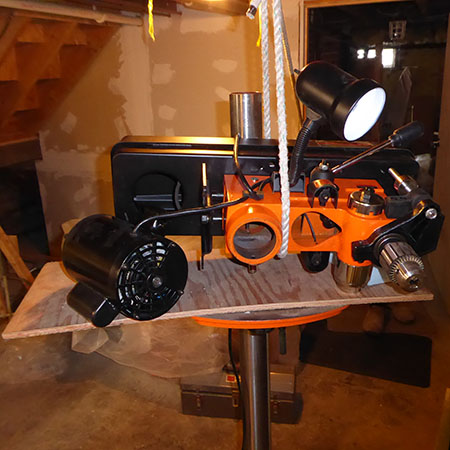
I have been hit with a rash of machine failures lately. It's very unusual, but still a nuisance because I have no patience with fixing machines. I know other people, especially males, thrive on the activity and challenge. My expectation of a machine is that I will turn it on and it will work. If it doesn't, I will hire someone to fix it if the repair isn't glaringly simple and easy. The recent batch generally represent things that can't readily be taken to a repair shop or serviced by a technician in a house call.
The first casualty was the backup disk system for my computer. I had bought an Apple Time Capsule for the purpose when I got my last Mac, with good results and long-term durability. On April 26, Apple discontinued its Airport line, including my Time Capsule. On April 27, my backup system stopped working without warning to me. I presume that Apple had programmed things that way. I wasn't too worried because I didn't care about the wifi capabilities anyway, since I could just plug it in with an ethernet cable, as the Apple Store explained to me years ago. Unfortunately, that didn't work. Shortly thereafter, my internet connection stopped working, though clearly the machine reported being connect to a wifi router that other devices were using successfully. Apple was helpful enough to provide phone support, but unfortunately the technician was baffled. Eventually I figured out that the problem with the internet was that the machine thought the ethernet cable to the backup drive was a connection to a router. Presumably some odd line of code buried in the discontinued Airport support accomplished this. I got the internet working again after a few hours and purchased a new backup disk, so within a few days all was well.
The next problem was with my garage door, which began to stop closing halfway down and then climb back up. This one was relatively easy. Presumably the interruption of the closing reflected an intentional safety feature to keep the door from doing damage or causing injury if it encountered unexpected resistance. Observation showed that where the door stopped moving, the roller wheel was binding against the side of the track. A mounting hole had been drilled outside of tolerance, and the installation crew hadn't bothered to correct that. The garage moves slightly over time, like most buidings, and the margin for error went away. Inside of fifteen minutes, with a drill and a wrench, I had things going again.
Problem three: a rather freakish encounter between the right rear-view mirror of my car and a stick in a trash can knocked off the external housing for the mirror. I was pleased (eventually) to find that the auto manufacturer had designed things well for this situation, a common one. The plastic housing snapped back on, though it took a bit of head-scratching for me to figure out how. I was off – but the instrument panel warned me, "Check right mirror turn signal." It turned out that the cord for the indicator came unplugged at the collision. Again, the underlying design was thoughtfully done so that all I needed to do was to plug the thing back in.
Problem four: the belt tension adjustment for my drill press failed the first time I tried to change the speed range by switching pulleys. I would have been glad to pay for a service call, but the machine is still under warranty. I called Wen customer service. The person I spoke with was very helpful, but the answer wasn't: bring it in to a factory repair shop. The thing weighs 150 pounds and I don't have a truck. When I explained that, he talked with a technician, who suggested, take off the head and have a look. Well, the suggestion was helpful, but the process wasn't. The head weighs 100 pounds or so, more than I can lift and move around with any precision. To make things worse, the ceiling of my cellar is low, so that removing the head necessitates tilting the machine at an angle. As an expedient, I lifted the head off using a rope and winch, which is much easier said than done. After three afternoon sessions, I finally identified the root problem, which was that a piece of the internal mechanism had a loose set screw and slipped. Unfortunately, this section was one of the first steps of the assembly, not readily accessible. It took quite a fit of fussing to get an Allen wrench inside the shaft hole in the case iron casing to a suitable position to turn the set screw. You may note in the picture above that the hole (in the center) is just big enough to get one's fingers into, but tight enough that getting the fingers in blocks the light to the pieces involved. Well, finally I got the thing going. I am disappointed that the manufacturer would put such a key function so far inside the machine, and hold it together with nothing more than a set screw. I am also disappointed that there was no provision for a service call from a factory authorized technician. I eventually got the drill press going again, but it took an inordinate amount of my time – for something that was clearly a Wen factory defect and covered by warranty.
Fifth and last, my lawn tractor is developing intermittent hesistation and hiccoughing. I strongly suspected that the problem was dirt in the fuel line between the gas tank and the fuel pump. Unfortunately, again the problem is with components installed early in the assembly process, so replacing the fuel line would be a major undertaking. I have got good usage out the Deere tractor and am happy overall with it. I'd get a new one gladly, expect that it wouldn't be much different from the one I have, albeit with a new and clean fuel line. I temporized by blowing out the line with compressed air for now, with the thought of having it picked up and serviced by Deere in the fall.
Whew! I hope my other mechanical possessions have a quiet spell.

I have an area in back of my house that has a very nice view. It would offer a very pleasant place to sit, except that later in the day, which offers the most likely hours for idling, it faces directly into the unshaded sun. In midsummer, the glare and heat are very uncomfortable. I've thought of all kinds of ways of providing shade that don't block the wonderful view out the kitchen window. There are a lot of approaches that wouldn't work.
I have settled on planting a locust tree. Locusts have very airy compound leaves that generally create light shade. They are one of the last trees to leave out in spring, and one of the first to lose their leaves in autumn.
I've found that transplanted trees usually don't do a lot in the first year in their new location, beyond getting themselves established. If after that the tree grows, say, two feet a year, it will be ten or fifteen years before it would begin to fulfil its mission of providing shade. That's fine. My yard has trees of all stages of their life cycles, from infants to decrepit old things. After twenty years here, some of the first things I planted are in the prime by now.
Most of the trees in my yard are native specimens that I've dug from elsewhere in my yard or nearby and relocated. Usually these are a foot or two in height at the time. There aren't native locusts around, however, so this one came from a nursery and is quite a bit taller going into the ground.
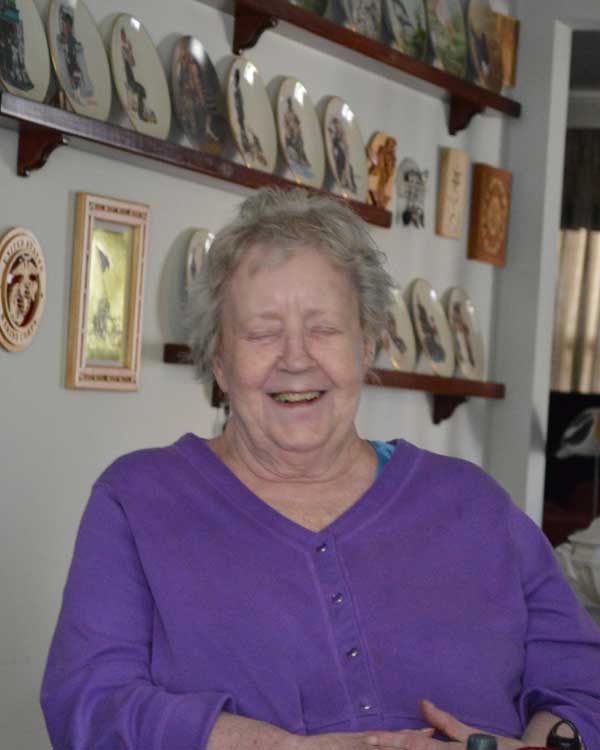
My aunt Janice Mitchell died on Saturday, March 30.
Janice was an amazingly cheery, aware person. She told me a couple of times about how her mother, who had pressured my mother to succeed, treated her differently and wanted her to be well liked. She was that.
I got to know Janice much better when my mother ![]() grew demented and there were difficult questions about how to deal with her life. My mother had told me that if such questions arose, I should talk with my brother, Peter, and figure them out with him. Alas, by the time my mother's difficulties were in full press, Peter had died a premature death. My mother, fortunately, was too far gone mentally by then to understand that she had a son, let alone who he was or what had happened to him. I began to look to Janice as someone to consult. I was very glad of the help, because the caregiving role was very confusing at times. As we spoke more often, I came to understand more and more how good-hearted a person she was. Following my mother's death, I drove to Denver to visit Janice and her family.
grew demented and there were difficult questions about how to deal with her life. My mother had told me that if such questions arose, I should talk with my brother, Peter, and figure them out with him. Alas, by the time my mother's difficulties were in full press, Peter had died a premature death. My mother, fortunately, was too far gone mentally by then to understand that she had a son, let alone who he was or what had happened to him. I began to look to Janice as someone to consult. I was very glad of the help, because the caregiving role was very confusing at times. As we spoke more often, I came to understand more and more how good-hearted a person she was. Following my mother's death, I drove to Denver to visit Janice and her family.
Janice married her high school sweetheart, Clyde. There was never anyone else. They were amazingly close for 72 years.
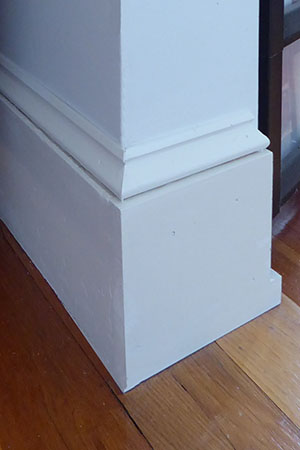
I bought my house in 2000 and have been working on it ever since. There was a very intense period shortly after I bought it, with the activity tapering down as time went on. I always kept at it with some level or the other of activity. In the last months, I have completed the last bits of work, down to getting at least one coat of paint everywhere. The last bits of carpentry and finish were the living room baseboard, not because it was such a large project, but because moving furniture around to get at it was a nuisance and disruption. Now, it is scraped, sanded, washed with hot water and ammonia, and painted with a primer and a finish coat. And everything around the has been thoroughly cleaned. Whew! Twenty years' work!
Of course, houses are never complete. By the time one has finished the original scope of work, something else has come up that needs attention, or there are later thoughts of improvements. For instance, now that I've retired, I am spending a lot more time in my shop in the basement and am looking at doing something to insulate it.

It hasn't been a really hard winter, but it has been colder as it's gone along. It's reassuring to see the traditional first signs of garden life, crocus spikes an inch high. It's supposed to continue cold and snow in the next twenty-four hours, but it's nice to see these harbingers of hope.

I am very pleased to have the opportunity to join the Planning Board of the Town of Ipswich as an associate memmber.
The Planning Board has dual missions of helping set goals and policies for the community, and of application of existing policies to individual cases of proposed land use and development. This placement of the combination of theory and practice is a fundamentally sound one.
The Town of Ipswich is characterized by a long history and the presence of significant open spaces. As time moves on, physical structures deteriorate, and social and economic conditions evolve dramatically, it is often challenging to maintain the fundamental conditions that its residents value. The Planning Department and Planning Board have done an outstanding job of recognizing and foreseeing this evolution, and steering change in directions and channels that provide both for modernization and preservation.
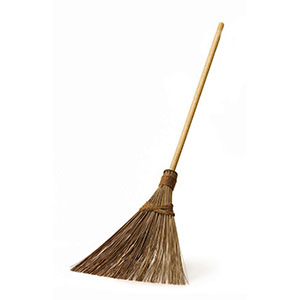
This web site began some five years ago as an afterthought from the one I did for my mother. ![]() Like many other homes, it has accumulated clutter that is no longer of use or relevance.
Like many other homes, it has accumulated clutter that is no longer of use or relevance.
I do a certain amount of housekeeping on a regular basis. For instance, as I add pieces of artwork, I sometimes remove others that appear, with the benefit of hindsight and the passage of time, not to hold so much interest or merit.
Larger undertakings have come to be in order as well. For instance, what was a while ago an occasional pursuit, stonework, has evolved to become a core activity. With the new year, I am limiting that focus on stone landscaping, removing a number of posts that seem at this point to have held only transient interest. Meanwhile, the three-dimensional art page continues to expand. A couple of other pages haven't had anything new for two or three years, reflecting reality, but I am thinking actively about going back to the activies they cover.
Five years is, of course, an age in terms of supporting information technology infrastructure. I've asked myself if it is time for a complete new home shell, presumably with a lot of content moved along like furniture. Maybe so. I will look more deeply into what's involved as effort and as benefit. It would be a question of purchasing a new package, probably from Project Seven, the authors of this one. They seemed, and still do, to be at the top of the pack simply as far as visual design. Still, if I don't want to write all the code myself, I would want to understand it at least well enough to make modifications. That would mean some technical learning for me. For the moment, I'm holding off but leaning toward an update. My experience is that deferred maintenance is particularly risky and often painful in software.
© 2025 Paul Nordberg